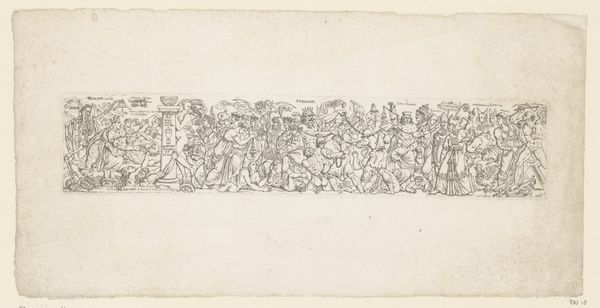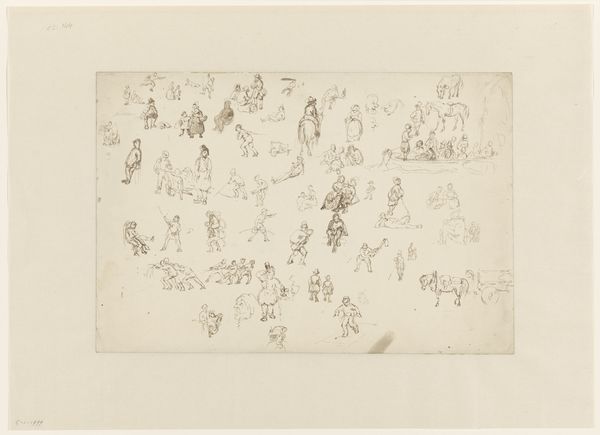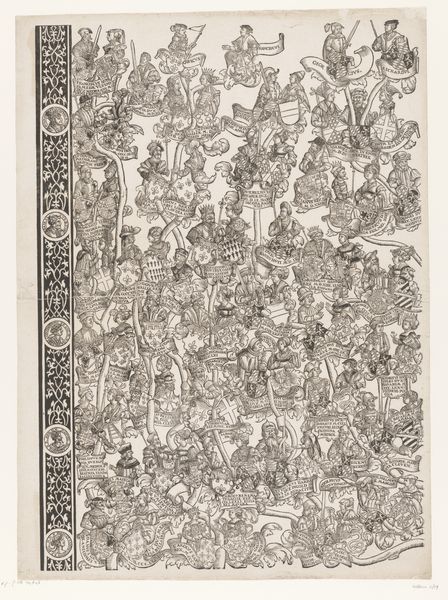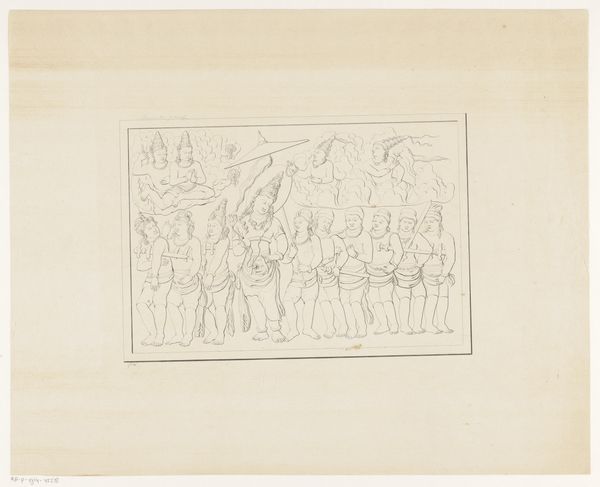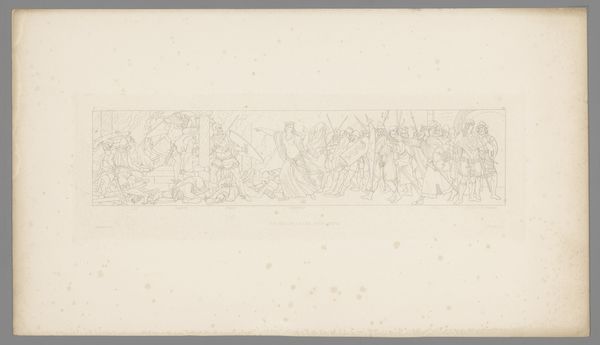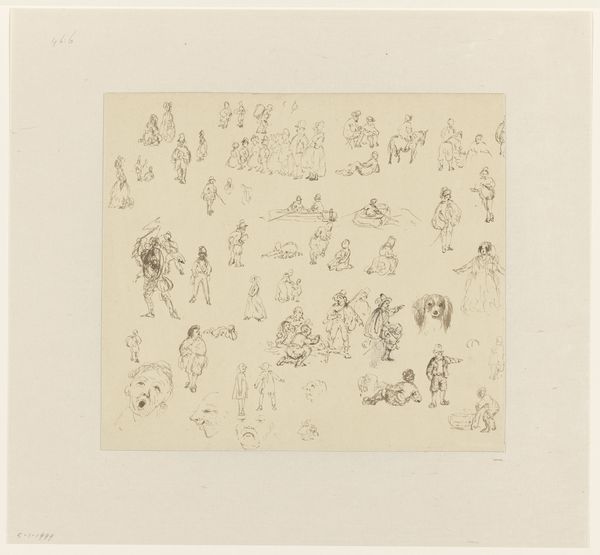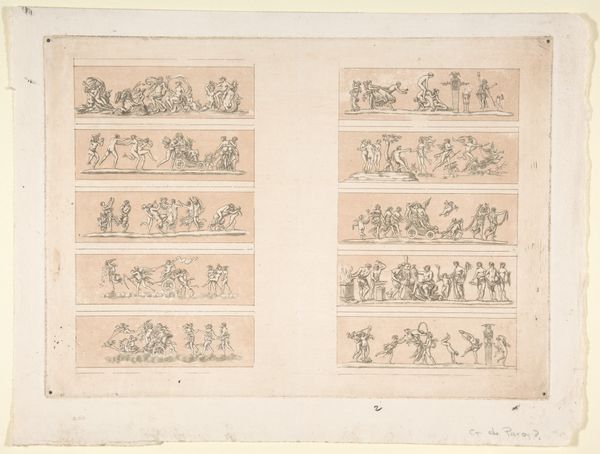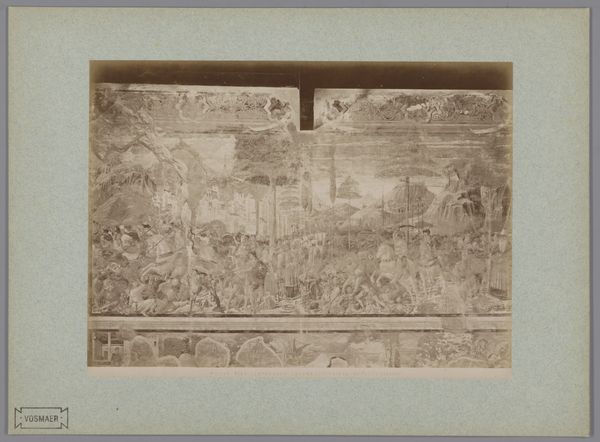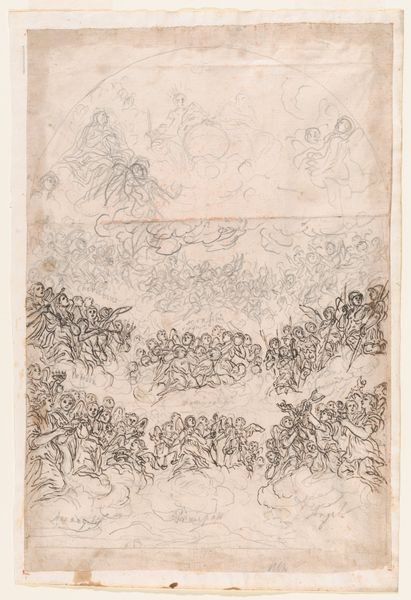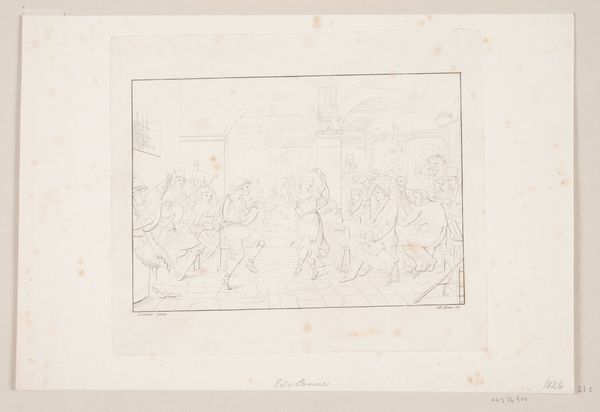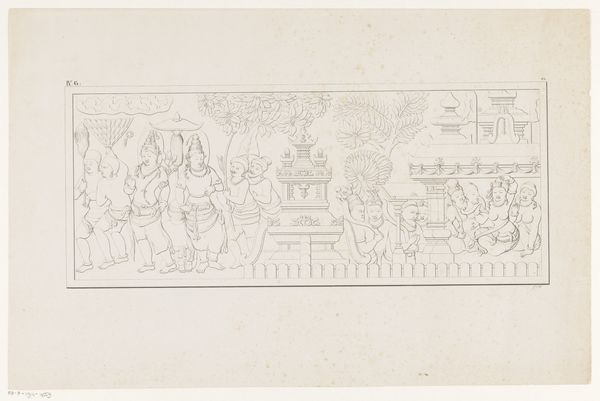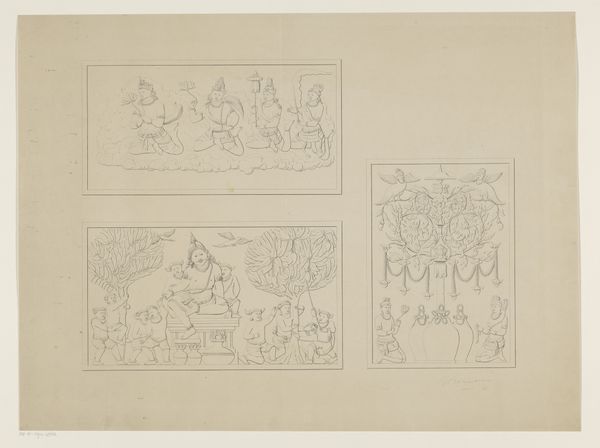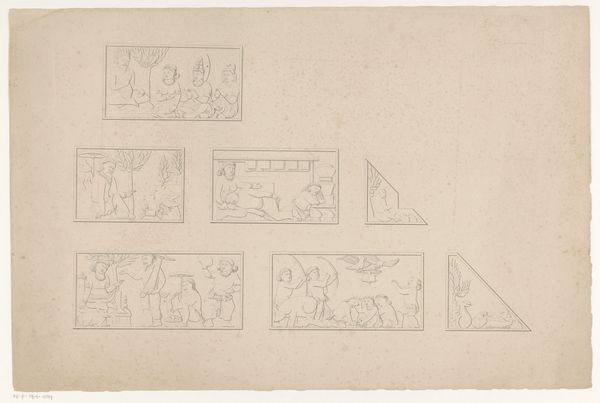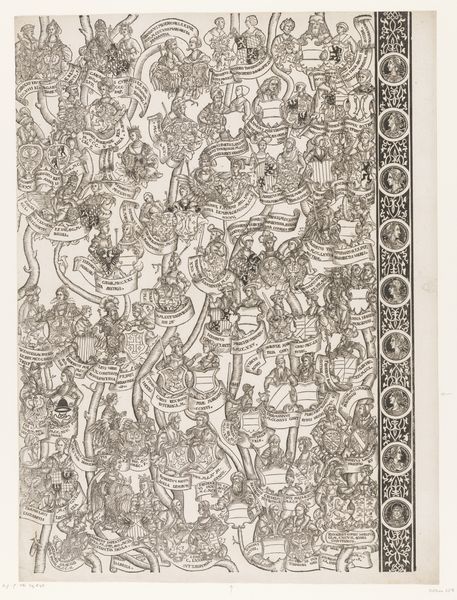
drawing, print, etching, paper, ink
#
drawing
#
narrative-art
# print
#
etching
#
asian-art
#
etching
#
paper
#
ink
#
orientalism
#
genre-painting
Dimensions: height 397 mm, width 589 mm
Copyright: Rijks Museum: Open Domain
Curator: Looking at "Oosterse mannen en vrouwen," or "Eastern Men and Women," created by Andries Wiemans Cz. between 1841 and 1858, what’s your first impression? The piece is rendered in etching and ink on paper. Editor: A whirlwind of faces and gestures. It feels performative, almost theatrical. The composition seems layered, segmented into distinct areas. There's a clear tension between the formal rows up top and the seemingly chaotic scenes below. Curator: The stratification certainly speaks to power dynamics. Wiemans was working during a period of intense Dutch engagement with the East, so we have to consider this through the lens of Orientalism. How did European artists construct their notions about Asian societies? It wasn’t merely observation, it was also an exercise in defining and maintaining European dominance. Editor: Absolutely, and the choice of medium furthers that agenda, perhaps subtly. Etchings like these were relatively easy to reproduce and disseminate. Who was seeing them, and what stereotypes were they reinforcing? Curator: Precisely. Consider the role of the public. Images such as this helped to shape a narrative about the Other, influencing colonial policies and everyday perceptions. This connects directly to feminist theory too: note how the women are grouped, observed, essentially presented as spectacle. Editor: Right. Are they active agents in the scene, or merely objects to be looked upon? It feels like the image offers little individual agency to these figures; rather, they become representatives of constructed "Eastern" types. I’m especially curious about how the display contexts—galleries, parlors—would shape these readings, then and now. Curator: And Wiemans’ sources likely further mediated the images. Where was he getting his ideas about ‘Oriental’ subjects? Travel, secondhand accounts, other artworks… understanding that network is crucial for a truly critical view. But even despite these issues, what sort of potential exists for contemporary interventions into this problematic visual history? How can we reclaim these works from a contemporary perspective? Editor: Maybe by foregrounding those erasures and challenging these very acts of looking. Examining how those original modes of representation and institutional habits persist and what strategies exist to combat it. I am still struck by the lack of context available here and what we might find were we to uncover more concrete specifics. Curator: Yes, a commitment to that kind of active unpacking is precisely what helps ensure historical material isn’t simply passively repeated or reaffirmed. Thanks. Editor: Likewise.
Comments
No comments
Be the first to comment and join the conversation on the ultimate creative platform.
